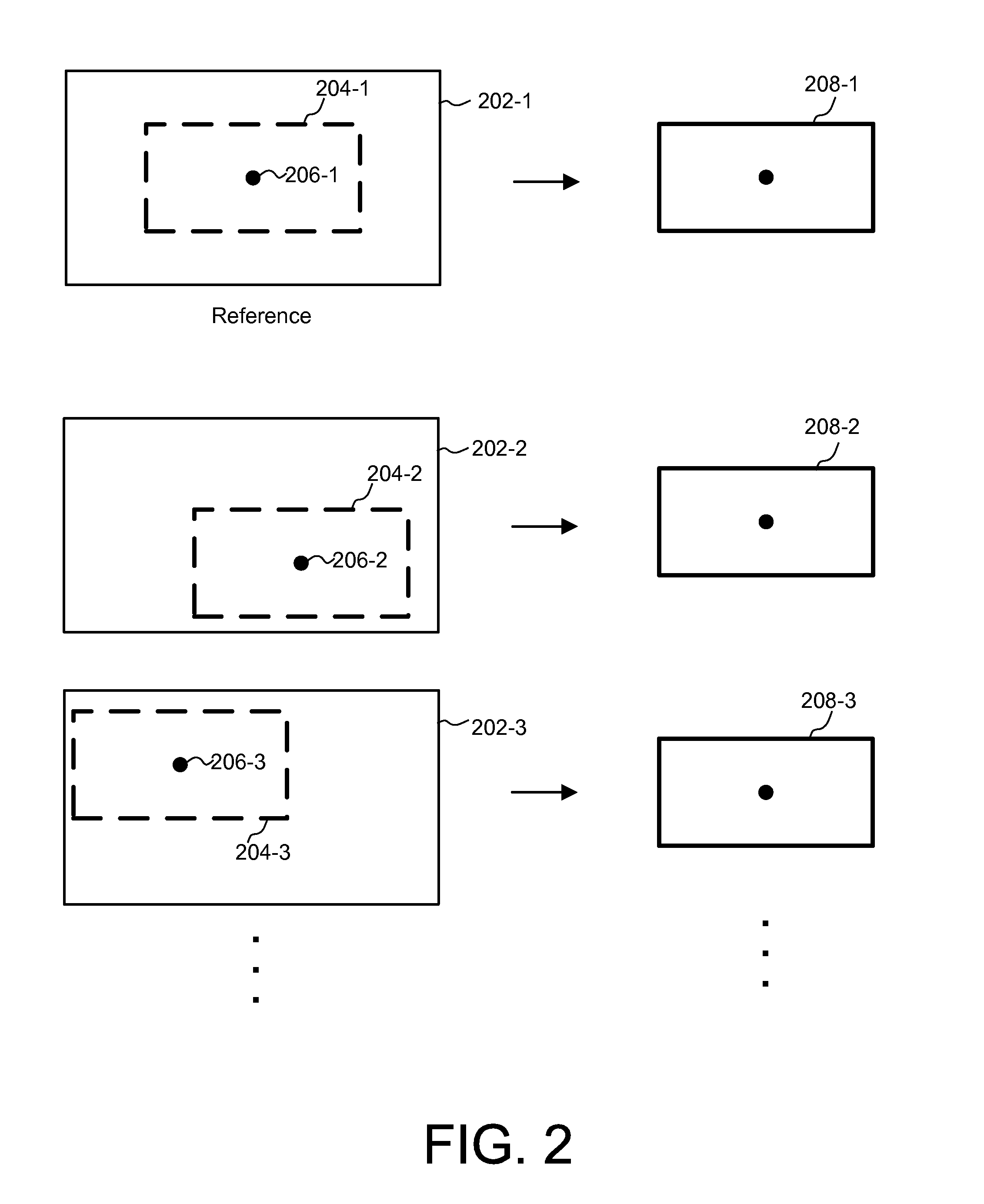Edge-based electronic image stabilization
a technology of electronic image stabilization and edge, which is applied in the field of digital video processing, can solve the problems of affecting the bandwidth requirements of image sensors and dsps, thermal problems with camera electronics, and consuming more camera batteries than desired
- Summary
- Abstract
- Description
- Claims
- Application Information
AI Technical Summary
Problems solved by technology
Method used
Image
Examples
example embodiments
Overview of Example Embodiments
[0018]An image stabilization system captures and stabilizes digital video. The image stabilization system includes a camera system for capturing digital video and an image processing system for performing stabilization. Digital video is received comprising a sequence of frames depicting a scene. The sequence of frames includes a reference frame and a second frame which each depict a common plurality of depicted points in the scene. A reference point is determined from the common plurality of points. The reference point corresponds to different pixel locations in the reference image and the second image (e.g., due to camera motion between capturing the images). A warping function is applied to the second frame of the digital video to generate a warped second frame. Depicted points of the depicted scene in the warped second frame are shifted non-uniformly relative to corresponding depicted points in the second image. Applying the warping function decreas...
PUM
 Login to View More
Login to View More Abstract
Description
Claims
Application Information
 Login to View More
Login to View More - R&D
- Intellectual Property
- Life Sciences
- Materials
- Tech Scout
- Unparalleled Data Quality
- Higher Quality Content
- 60% Fewer Hallucinations
Browse by: Latest US Patents, China's latest patents, Technical Efficacy Thesaurus, Application Domain, Technology Topic, Popular Technical Reports.
© 2025 PatSnap. All rights reserved.Legal|Privacy policy|Modern Slavery Act Transparency Statement|Sitemap|About US| Contact US: help@patsnap.com



